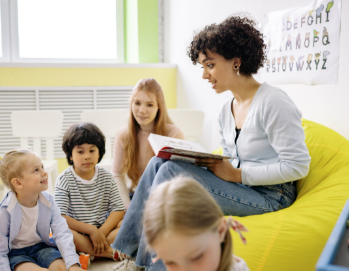Learning a new language is exciting—and when children are involved, it becomes even more joyful. Whether you’re a parent, teacher, or caregiver, practicing languages with children can help them build confidence, develop communication skills, and spark a lifelong love for learning. Here are some positive and playful ways to make language practice part of your everyday routine.
1. Start with Songs and Rhymes
Children love music, and language learning through songs is both fun and memorable. Pick simple tunes in the target language—like the alphabet song, numbers, or animal sounds. Singing together builds vocabulary and improves pronunciation without it feeling like a lesson.
2. Use Picture Books in Two Languages
Bilingual books are a gentle way to introduce new words. Read stories aloud and pause to discuss what’s happening. You can even alternate pages in different languages or compare translations. This helps children associate words with context and meaning.
3. Label Everyday Objects
Turn your home into a language-learning playground by placing sticky notes on everyday items with their names in the target language. This method builds natural exposure. For example, the fridge becomes “el refrigerador” or “le réfrigérateur,” depending on your target language.
4. Play Language Games
Interactive games like memory matching, bingo, or Simon Says can be adapted to use new vocabulary. For younger kids, try games that involve pointing, repeating, or moving around. Older children may enjoy word puzzles or charades.
5. Watch Cartoons or Short Videos
Choose age-appropriate shows in the target language with subtitles. Rewatch favorite episodes to reinforce understanding. Even 10–15 minutes a day can make a difference and offer an immersive experience that feels like play.
6. Create a Language-Rich Routine
Include the language in daily routines. Say good morning, count steps up the stairs, or describe what you’re cooking—using the new language. Repetition helps children feel more comfortable and understand patterns.
7. Encourage Role Play and Pretend Play
Give children space to use the language creatively—like pretending to run a store or host a cooking show in the new language. This builds confidence and helps them practice real-life dialogue in a relaxed setting.
8. Celebrate Progress Together
Make a big deal out of small wins. Did they say a full sentence? Use a new word correctly? Celebrate with claps, stickers, or a special song. Positive reinforcement helps keep motivation high.
Final Thought
Practicing languages with children works best when it’s joyful, patient, and consistent. The goal isn’t perfection—it’s progress. With a bit of creativity and a lot of encouragement, language learning can become a shared adventure that strengthens communication and connection.














